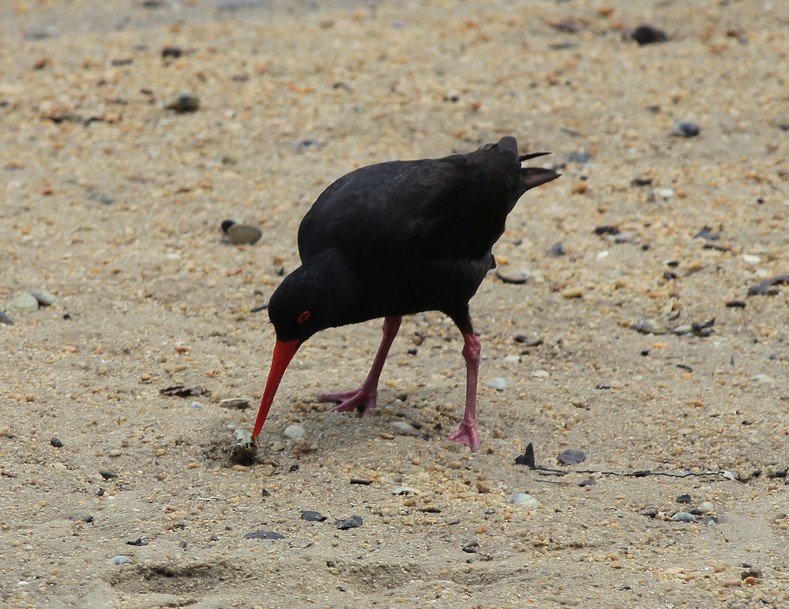HAEMATOPUS UNICOLOR - (FORSTER, 1844)
Classe : Aves > Ordre : Charadriiformes > Famille : Haematopodidae > Genre : Haematopus
L'Huîtrier variable (Haematopus unicolor) est une espèce d'oiseaux limicoles de la famille des Haematopodidae endémique de la Nouvelle-Zélande.
L'Huîtrier variable (Haematopus unicolor) est une espèce d'oiseaux limicoles de la famille des Haematopodidae endémique de la Nouvelle-Zélande.
----------------------------------------------
The variable oystercatchers are the workers of the beach and mudflats, constantly busy and on the hunt for food while the gulls hang around in gangs looking for the main chance. They are noisy and talkative birds, feeding on molluscs, crabs and worms. They open bivalve shellfish by stabbing between the shells and twisting the bill to part the shells or by hammering a hole in the shell. The adults spend some time teaching their offspring the trick of opening shells, a constant source of amusement. They nest on the shore or among rocks and therefore are often victims of holiday makers. They are great parents and are aggressive towards any threat to their offspring, mobbing aerial predators and leading ground predators, including humans, away with various tactics.
The variable is slightly larger than the pied and is called variable because its colour is variable, that is it is sometimes pied, all very confusing to the unitiated. In its variable phase is usually identified from the pied by the lack of a white tab in front of the folded wing, an exercise for birdwatchers.
Oystercatchers are found on every continent except Antarctica. In South America the Falkland Islands, New Zealand and Australia one of the pair of species is pied the other black. There is still no uniform agreement on how many species of oystercatchers there are. Sibley & Monroe (1990) and Clements (1991) lists 11 species. Hockey (1996) includes the South Island pied oystercatcher, Haematopus finschi, within the races of the Eurasian oystercatcher, Haematopus ostralegus, but splits off the Chatham Island oystercatcher, Haematopus chathamensis, from the variable, creating thereby an endangered species. He also gives some arguments why the sooty oystercatcher, Haematopus fulginosus, of Australia should be split into two species, creating the spectacled oystercatcher, Haematopus opthalmicus, and why the Galapagos Island birds, Haematopus galapagensis, should be separated from the American oystercatcher.
Description
48 cm., 725 g., variable plumage from complete black to pied, pied like pied oystercatcher but larger and bill heavier, and lacks the white tab in front of folded wing, long red bill, red eyes and pink legs.
48 cm., 725 g., variable plumage from complete black to pied, pied like pied oystercatcher but larger and bill heavier, and lacks the white tab in front of folded wing, long red bill, red eyes and pink legs.
Where to find
Rocky and sandy coasts on both main islands, more common in some areas such as the Bay of Plenty.
Rocky and sandy coasts on both main islands, more common in some areas such as the Bay of Plenty.
